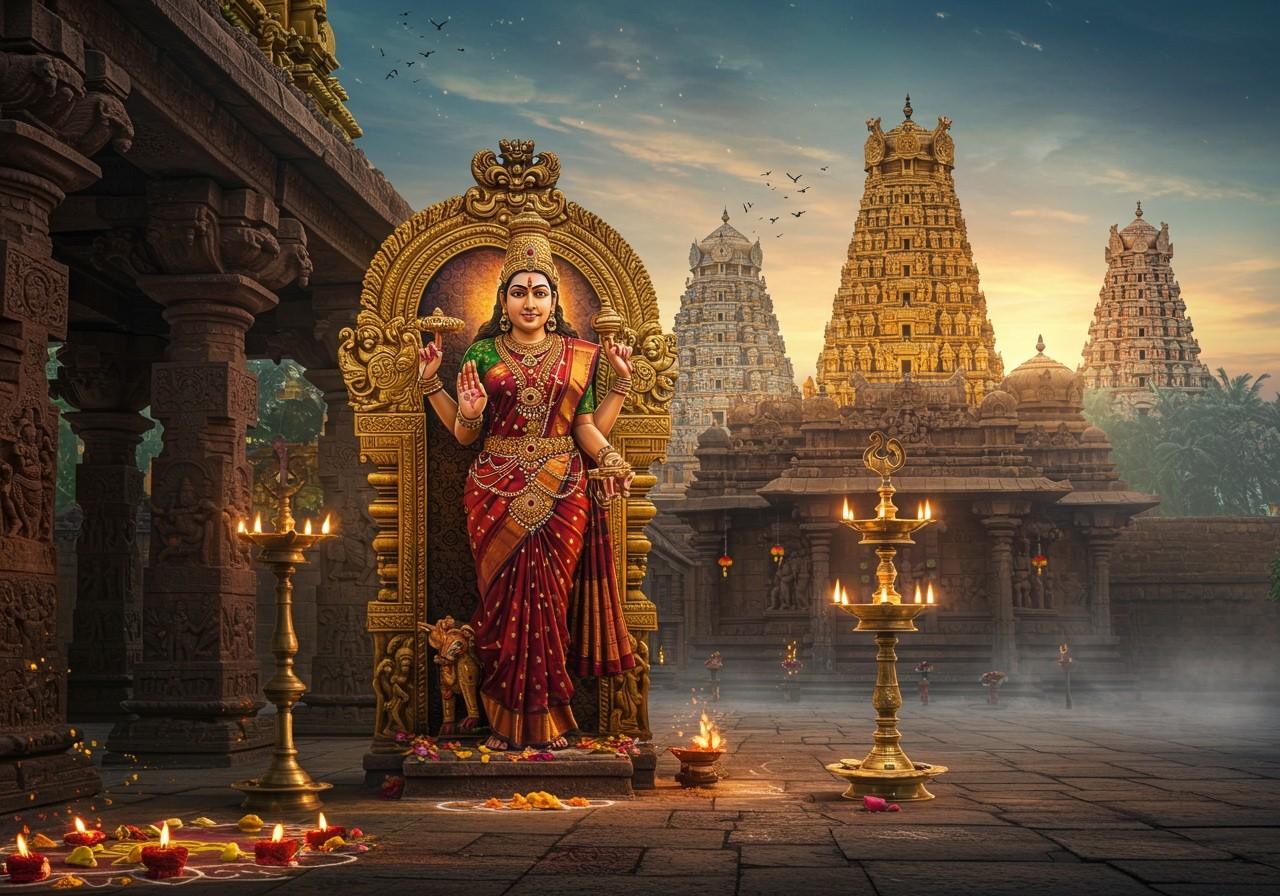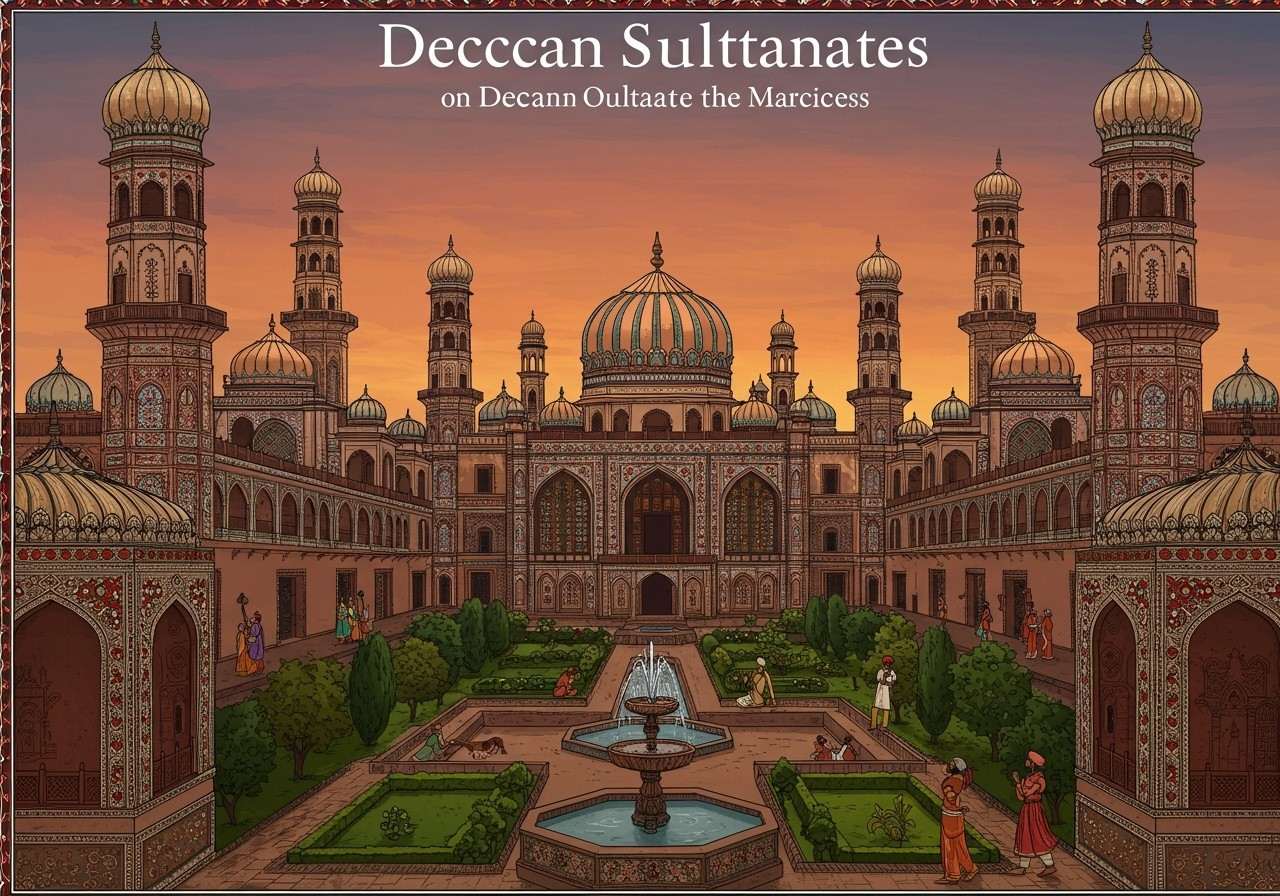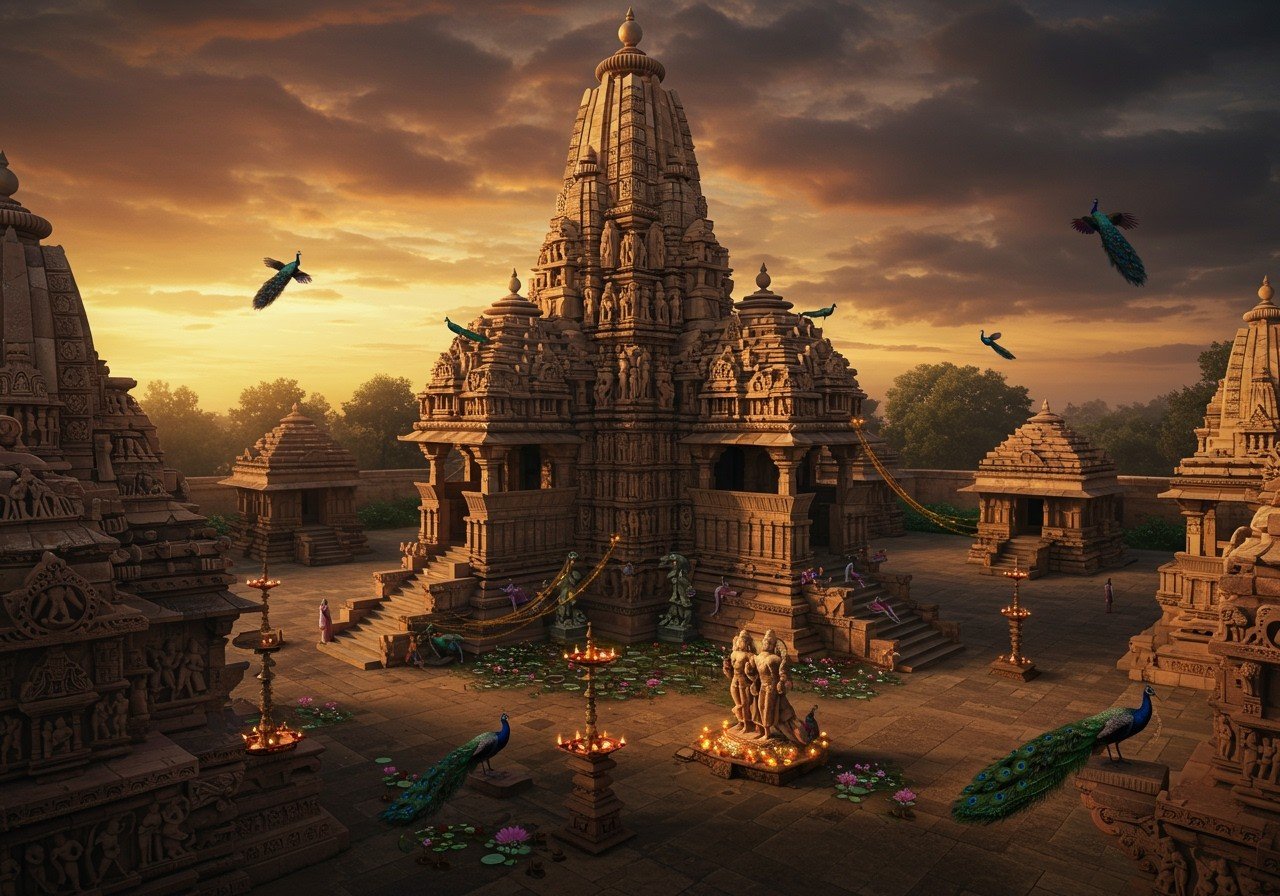

In the heart of our incredible country lies the Deccan Plateau, a land that has been a cradle of culture for centuries. It’s here that a remarkable chapter of Indian history was written – the story of the Deccan Sultanates. These were five powerful kingdoms: Bijapur, Golconda, Ahmednagar, Bidar, and Berar. From the late 15th to the 17th centuries, they created a legacy of art, architecture, and culture that still takes our breath away. This wasn’t just about building forts and palaces; it was about creating a unique identity, a beautiful fusion of different worlds that is quintessentially Indian.
The Rise of a Cultural Melting Pot
When the great Bahmani Sultanate began to weaken, these five new kingdoms rose from its fragments. Their location was a huge advantage, turning the Deccan into a bustling hub where ideas, traditions, and people from Persia, Turkey, and Central Asia met with the vibrant local cultures. This constant exchange led to a beautiful ‘Ganga-Jamuni tehzeeb’, a synthesis that gave birth to some of the most stunning creations our country has ever seen. Despite facing challenges from powers like the Vijayanagara Empire and the Mughals, these Sultanates became vibrant centres of innovation.
Architectural Marvels That Defy Time
The true genius of the Deccan Sultanates is etched in stone across the region. Their architecture is a masterclass in blending styles. It’s not purely Persian, nor is it completely Indian; it’s a unique Deccani language of design. They took the grandeur of Indo-Islamic styles and infused it with local sensibilities, creating something truly special.
- The Whispering Wonder of Gol Gumbaz: Located in Bijapur, this tomb of Mohammed Adil Shah is an engineering marvel. Imagine a dome so immense that it is one of the largest in the world, where a single whisper can be heard clearly from one end to the other. This wasn’t just a building; it was a statement of ambition and skill, a testament to their architectural prowess.
- Charminar, the Heart of Hyderabad: More than just a monument, the Charminar is an icon of Islamic architecture in India. With its four towering minarets and graceful arches, it stands as a symbol of the Qutb Shahi dynasty’s vision and aesthetic sense. It represents the very soul of Hyderabad.
- Mighty Fortresses of Strategy: The forts at Golconda and Bidar are not just piles of stone; they are brilliant examples of military planning. These fortified cities show us how architecture was crucial for defence, with clever acoustics, water supply systems, and formidable walls that protected the kingdoms. They remind us of the strategic genius that co-existed with artistic expression. The Chandela dynasty also showcased incredible architectural feats, as seen in the Kandariya Mahadeva Temple, highlighting the rich architectural diversity of medieval India.
Art That Breathes Life and Colour

The courts of the Sultanates were alive with artistic energy. Patronage from the rulers allowed arts like miniature painting to flourish, especially in Ahmednagar, Bijapur, and Golconda. These paintings are a window into their world, filled with vibrant depictions of courtly life, royal portraits, and epic scenes. The influence of Persian artists was strong initially, but soon, a distinctly Deccani style emerged, which later blossomed into the famous Hyderabad style of painting.
Another jewel from this era is Bidriware. This unique metal handicraft, originating from Bidar, involves inlaying intricate silver designs onto a blackened alloy of zinc and copper. The stunning contrast and delicate patterns make it a cherished art form even today. It’s a beautiful reminder that art was not just for palaces but also a part of everyday life. This legacy of intricate craftsmanship continues in India, and you can bring a piece of it home with beautifully designed items like this Handcrafted Brass Decorative Plate with Peacock Design, perfect for puja and home decor.
The Voice of the Deccan: A Symphony of Languages
The cultural fusion in the Deccan wasn’t limited to just art and architecture; it created a new language. Dakhani, a unique blend of Arabic-Persian with our local Marathi, Kannada, and Telugu, was born here. It grew into Dakhani Urdu, a distinct and poetic tongue that was different from the Urdu spoken in the North. The royal courts were filled with poets and scholars, and literature thrived in Persian, Telugu, and the newly born Dakhani, creating a rich literary heritage.
The Enduring Legacy of the Sultanates
Though the Sultanates eventually declined due to internal rivalries and the expansion of the Mughal Empire, their cultural legacy is immortal. They created a unique Deccani identity that has left a lasting mark on South India’s culture. This beautiful synthesis can still be felt in the region’s traditions, its delectable cuisine which itself is a part of our wider culinary heritage, and the warmth of its people. They teach us a valuable lesson: that the coming together of different cultures can create something truly beautiful and enduring.
Understanding the Deccani Heritage Better
Many of us are curious about this fascinating period of our history. You might wonder what truly set the Deccani Sultanates apart. Their uniqueness comes from the beautiful way they blended Persian and Turkish influences with local Indian artistic traditions. This resulted in a distinct Indo-Islamic style that you won’t find anywhere else. The architectural brilliance is still visible in monuments like the Gol Gumbaz in Bijapur, with its mind-boggling dome, and the iconic Charminar in Hyderabad. Their impact was profound, shaping a syncretic culture that promoted music, literature, and art, leaving behind a rich legacy that continues to influence Indian culture today. By visiting these historical sites in Karnataka, Maharashtra, and Telangana, one can truly get a feel for the grandeur of this era.
Bring Home a Touch of Tradition with Poojn.in
Celebrating our rich heritage, like that of the Deccan Sultanates, connects us to our roots. At poojn.in, we believe in keeping these traditions alive. While the grandeur of the Sultanates belongs to history, the spirit of Indian artistry and devotion is timeless. You can bring this spirit into your own home with our curated collection of cultural and pooja items.
Enhance your sacred space with a Pure Brass Om Plate Pooja Thali, or add an element of artistic elegance with a Designer Mandala Wall Decor. Each product at poojn.in is a celebration of the craftsmanship that has been passed down through generations, making it easy for you to honour our culture with authenticity and love.


